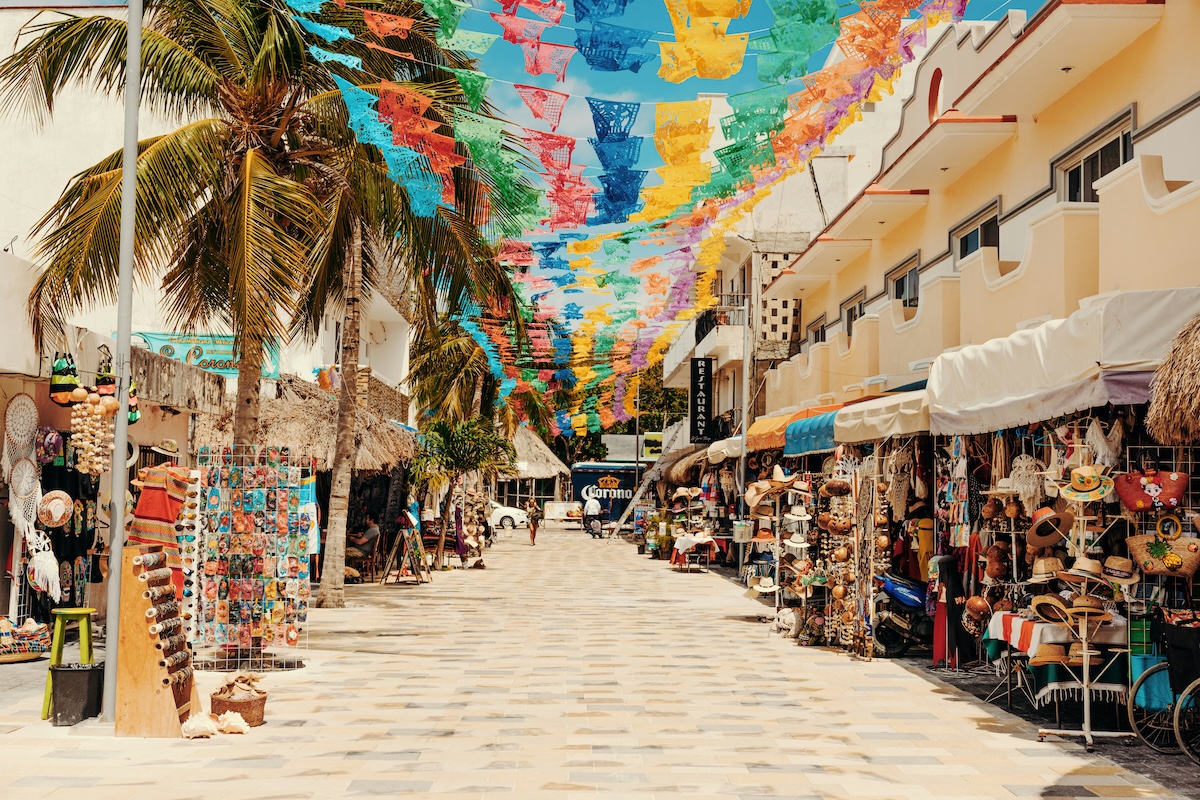
How to Photograph Markets: 6 Steps to Capture Vibrant Cultural Images
By: Krista Walters
Skip to Section
Article Summary
Want photos that scream “local culture” instead of “tourist with camera”? Street markets are your goldmine for shots that actually tell a story.
Street market photography goes way beyond generic crowd shots when you know what you’re doing. Golden hour beats harsh noon light every time, and zooming in on spice textures makes viewers practically smell the cumin through their screens. You’ll pick up composition tricks like the rule of thirds (think giant hashtag on your viewfinder) and post-processing tips that won’t turn your photos into Instagram filter disasters. Plus, you’ll learn the art of asking permission without being that weird tourist who shoves cameras in people’s faces.
- Research market hours and peak times so you show up when the action happens, not when vendors are packing up.
- Golden hour light makes everything look better – shoot just after sunrise or before sunset for warm, soft lighting.
- Focus on details like spice textures and textile patterns instead of just wide shots of crowds.
- Ask permission before photographing people – it shows respect and gets you better, more relaxed expressions.
- Use the rule of thirds and leading lines to create compositions that draw viewers into the scene.
Want to capture the heart of a town, city, or country?
Street markets are among the most captivating places to photograph when traveling. They offer a snapshot of the local culture, traditions, and daily life in a way that few other subjects can.
Most markets burst with vibrant colors, diverse textures, and lively scenes to draw in crowds. This diversity offers endless opportunities for unique market photography that truly encapsulates the essence of a destination—whether it’s a bustling bazaar in Istanbul or a serene floating market in Thailand.
Here’s how to get the best images with a deeply personal local narrative.
Step 1: Research and Plan Ahead
Successful market photography requires research and planning.
Here are some pointers:
- Start by researching market locations, hours, and peak times, considering seasonal changes. Knowing when the market is most active (or quiet) helps you capture vibrant photos full of love, color, and poignance.
- Understand cultural sensitivities and market etiquette. For instance, some markets may have rules about photography, or particular areas might be off-limits. Respect local customs to avoid offending vendors and shoppers.
- Prepare your gear meticulously. Bring a versatile lens that can handle wide-angle shots and close-ups. Ensure your batteries are fully charged and carry extra memory cards and batteries.
- Consider the lighting conditions you’ll encounter; a tripod and a fast lens can be beneficial in low-light situations. Plan your visit to coincide with the best lighting conditions to enhance your travel photography and capture stunning cultural images.
Step 2: Leverage Natural Light
Part of capturing organic and authentic market photos is keeping them as natural and not staged as possible; a part of the magic lies in using natural lighting.
Natural light can significantly enhance your market photography. It adds depth, warmth, and realism to your images, making them more vibrant and engaging.
A popular time to leverage natural light is during the golden hours—shortly after sunrise and just before sunset. These times provide soft, diffused lighting that minimizes harsh shadows and highlights, perfect for capturing the lively atmosphere of markets.
For indoor or night markets with low light, adjust your camera’s settings to achieve the best results. Here are two suggestions:
- Use a wide aperture (low f-stop) to allow more light into your camera, creating a pleasing background blur that highlights your subject.
- Increase your ISO setting to brighten your images without needing a flash, which can be disruptive and unflattering.
Combining these techniques will help you capture stunning cultural images, even in challenging light conditions, ensuring your market photos are as vibrant and captivating as you desire.
Related Quiz: Pick Some Fruits and We’ll Recommend a Destination with Amazing Outdoor Markets
Step 3: Focus on the Details
Instead of taking general market pictures, focus on an activity or detail that intrigues you. Focusing on the details can make your market photography truly stand out.
Consider capturing market goods’ textures, colors, and patterns to create vibrant market photos highlighting local culture.
In such instances, use a macro lens to zoom in on intricate details, such as the fine weave of textiles, the rich hues of spices, or the craftsmanship of homemade items.
Photographing markets with an eye for detail brings out the unique characteristics of each item, making your cultural images more compelling.
Look for unique angles to capture eye-catching subjects like colorful produce, exotic spices, or beautifully made jewelry. By zeroing in on these elements, you can showcase the market’s diversity and richness.
Step 4: Engage with People
Engaging with the locals is the key to capturing market photography’s true essence. These cultural images provide a deeper connection to the marketplace and its people.
Vendors, shoppers, and performers bring life to the market, creating a dynamic atmosphere that makes for vibrant market photos.
Approach people with respect and friendliness, and always ask for permission before taking their photos—no matter which country you’re in.
Asking for permission shows your subjects respect and may also help them be more relaxed, providing natural expressions.
When photographing markets, aim for candid shots that capture genuine interactions and emotions.
Focus on expressive portraits that tell a story, like a vendor proudly displaying their goods or a shopper enthusiastically haggling.
Related Quiz: Choose 5 Sushi Rolls and We’ll Pair You with an Iconic Japanese City Market
Step 5: Master Composition and Framing
Mastering composition and framing is essential for market photography.
Start using the rule of thirds, which divides your image into nine equal parts (3×3) with two horizontal and two vertical lines (like a big hashtag in your frame).
Place key elements along these guidelines or at their intersections to create engaging and balanced photos.
Incorporate leading lines, such as pathways or rows of stalls, to guide the viewer’s eye through the captured scene and add depth to your photos.
Framing techniques, such as shooting through archways or between market stalls, can provide context and focus attention on your subject.
Compelling compositions highlight the bustling market environment. Capture wide shots showing the busy atmosphere and mix in close-ups of interesting details.
Step 6: Enhance Your Photos with Post-Processing
An essential aspect of photography, in general, is enhancing your pictures through post-processing. This is especially important if you’re building your online portfolio and want to create consistency or if you have a specific style for your social media shots,
Begin with basic adjustments like contrast, saturation, and sharpness to make your images pop. Increasing contrast can add depth, boosting saturation brings out the market’s rich colors, and sharpening helps highlight details and textures.
Use tools like Adobe Lightroom and Photoshop for advanced editing. These programs offer powerful color correction, cropping, and noise reduction features, allowing you to refine your market photography.
However, aim for a natural look unless you want a specific final result.
Over-processing can make your cultural images appear artificial. Maintain a balance by making subtle adjustments that enhance, rather than overshadow, your original shot.
Get The Most Culturally Relevant Shots
Capturing vibrant cultural images at markets involves researching and planning, leveraging natural light, focusing on details, engaging with people, mastering composition, and enhancing photos with post-processing.
Experiment and practice these techniques to improve your market photography.
Go on…enjoy the joy and reward of photographing markets worldwide, creating stunning and authentic travel photos to remind you of your adventures!
About the Author
Krista Walters has been an active editor and writer for 8 years. She typically covers topics around photography, graphic design, and UX research. When she’s not busy writing articles, she sometimes does illustration work for clients in need of creative flair.
Featured image by Braden Collum on Unsplash
Information published on this website and across our networks can change over time. Stories and recommendations reflect the subjective opinions of our writers. You should consult multiple sources to ensure you have the most current, safe, and correct details for your own research and plans.
Frayed Passport is a participant in the Amazon Associates Program, an affiliate advertising program designed to provide a means for sites to earn advertising fees by advertising and linking to Amazon.com. We also may share links to other affiliates and sponsors in articles across our website.




